Halios watches probably needs little introduction on worn&wound. Over the last few years, the Vancouver based dive watch brand has earned a reputation for making great, unique watches. We previously reviewed two versions of their Tropik watches, one in bronze and the other in steel, both of which earned high regards from us. Stylish, restrained, well built, well priced… they were hard not to like.
Last October, Jason, the founder of Halios, brought his wares down from Canada to show at our Wind-Up: NYC event. He had on display samples of all of his watches, from the coveted 1000M Puck to his newest at the time and the topic of this review, the Delfin. It was love at first sight. I’m not sure how many times I went over to his booth and quietly picked it up to ogle and try on, but hopefully I didn’t annoy him too much. Needless to day, I knew I had to review it.
Fast forward a few months and here we are with the Delfin PVD, the follow up to the initial stainless model. Sporting a sophisticated design that pulls from vintage, but feels contemporary the Delfin is a unique and highly attractive 500m dive watch. Coming in at $690 or $715 shipped to the US, this Miyota 9015 powered boutique diver is surely one you’re going to want to know more about.









 Featured Videos
Featured Videos




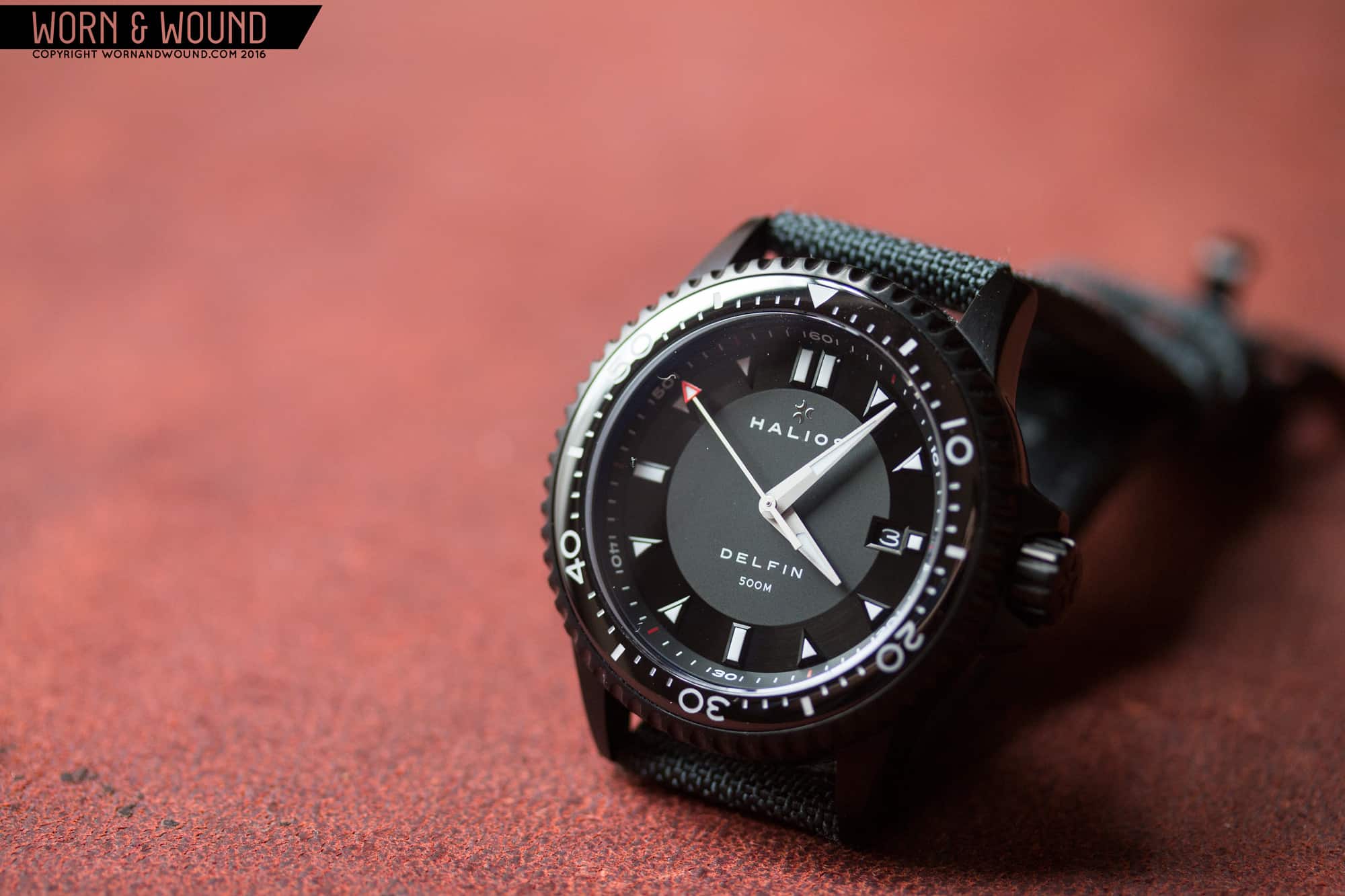


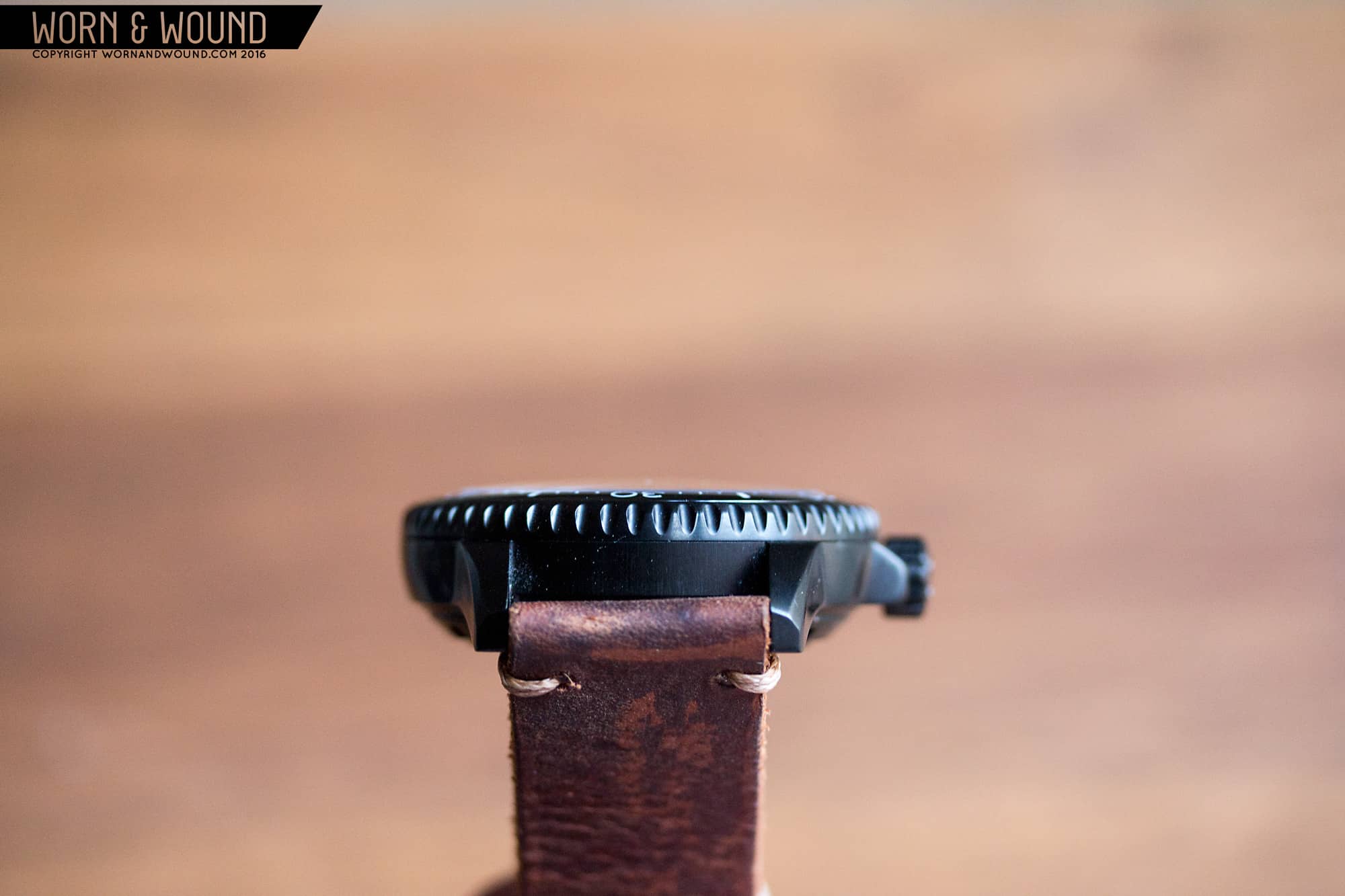
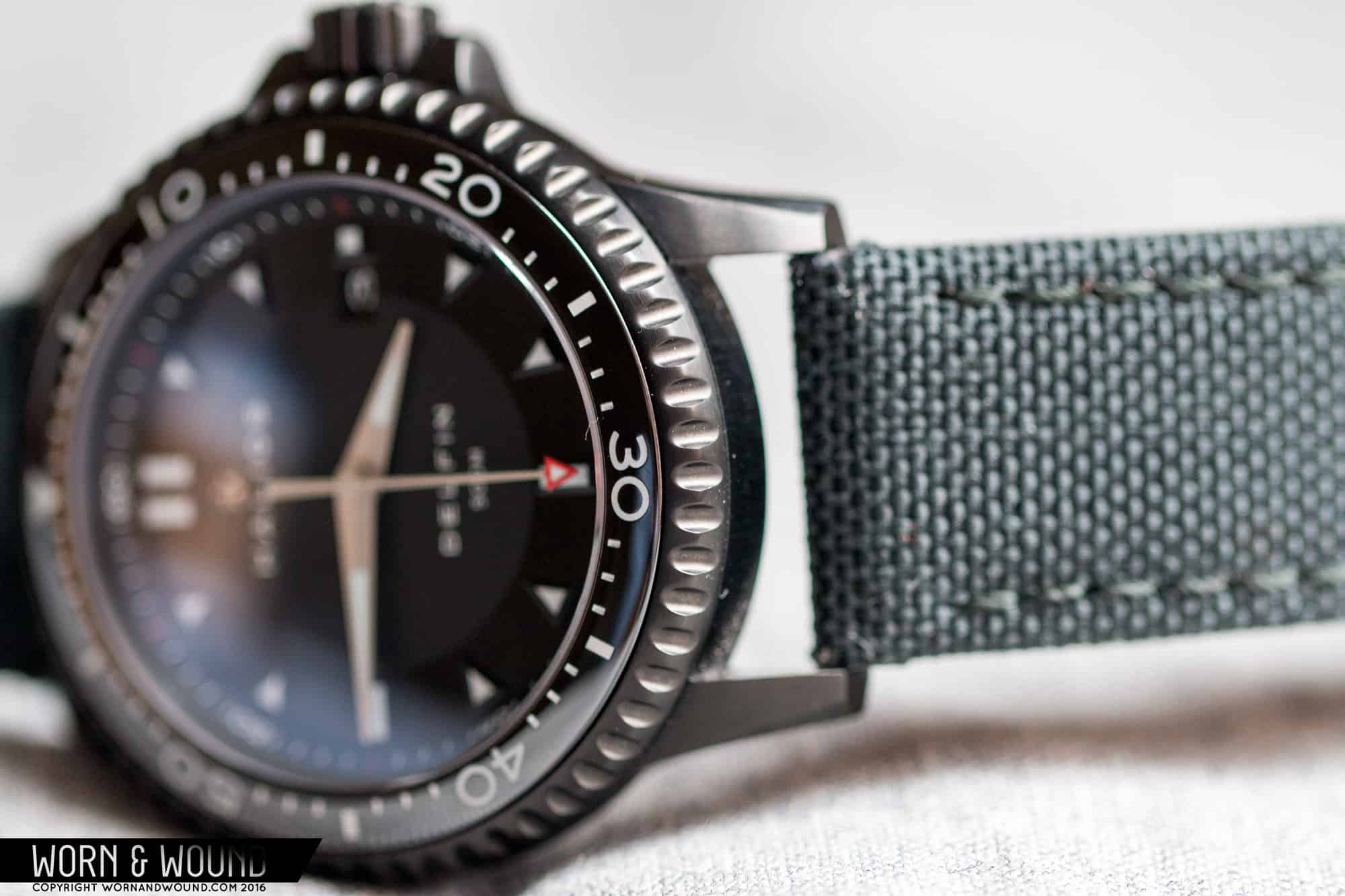
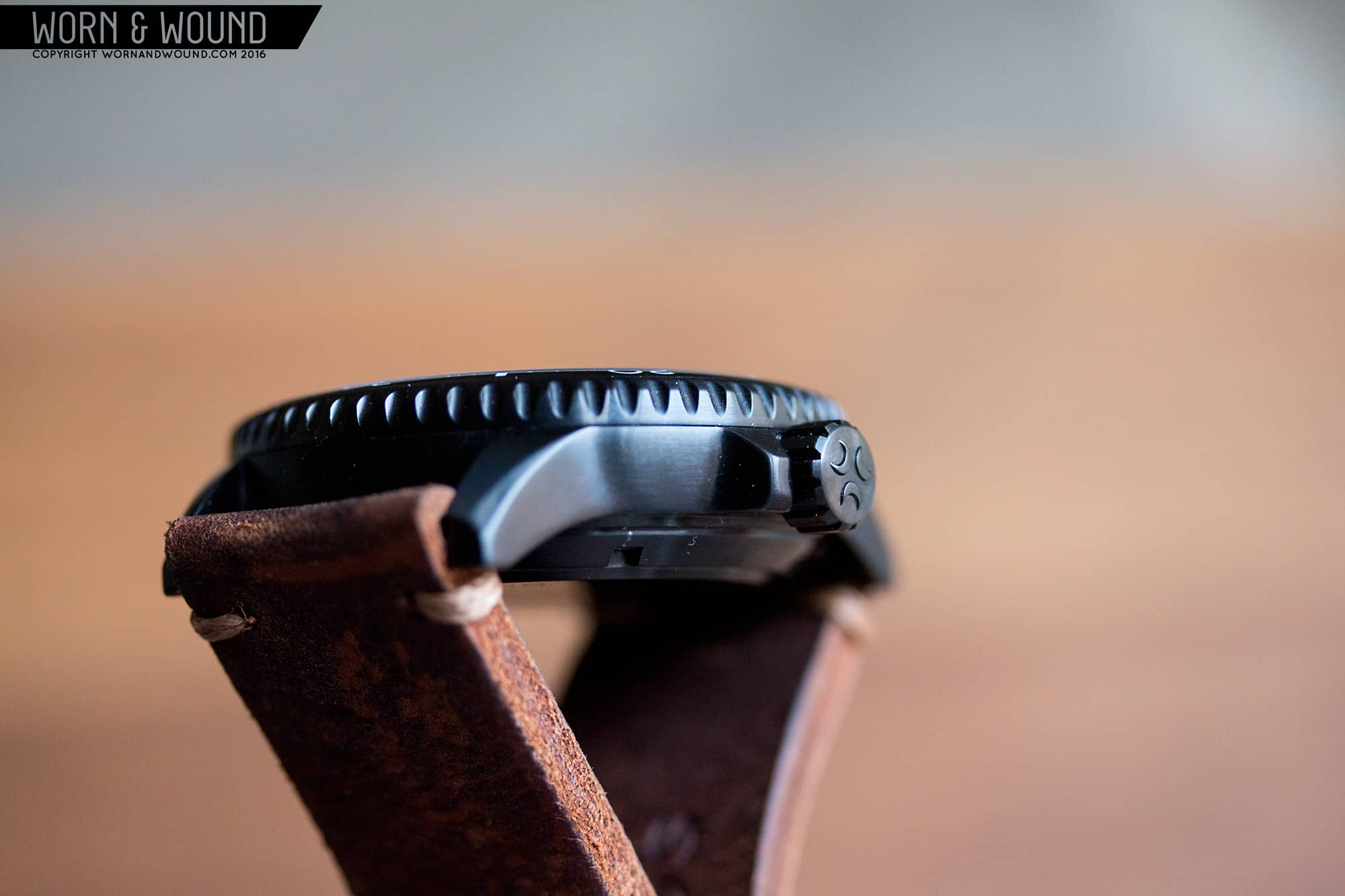


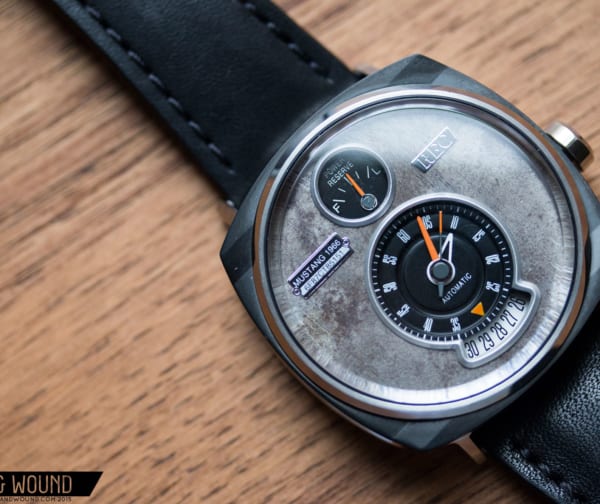
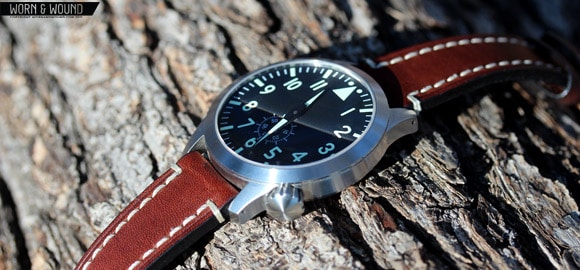

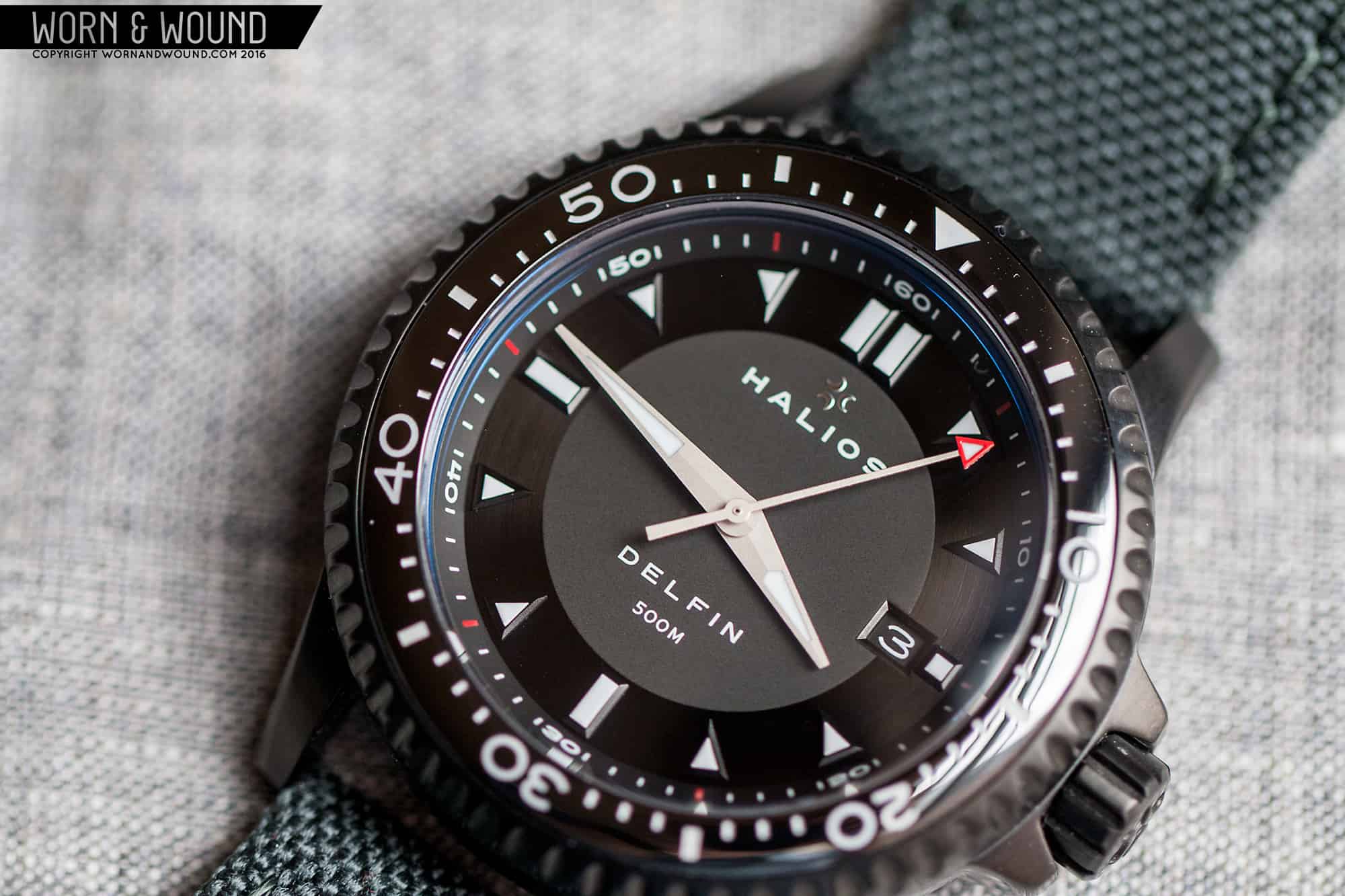
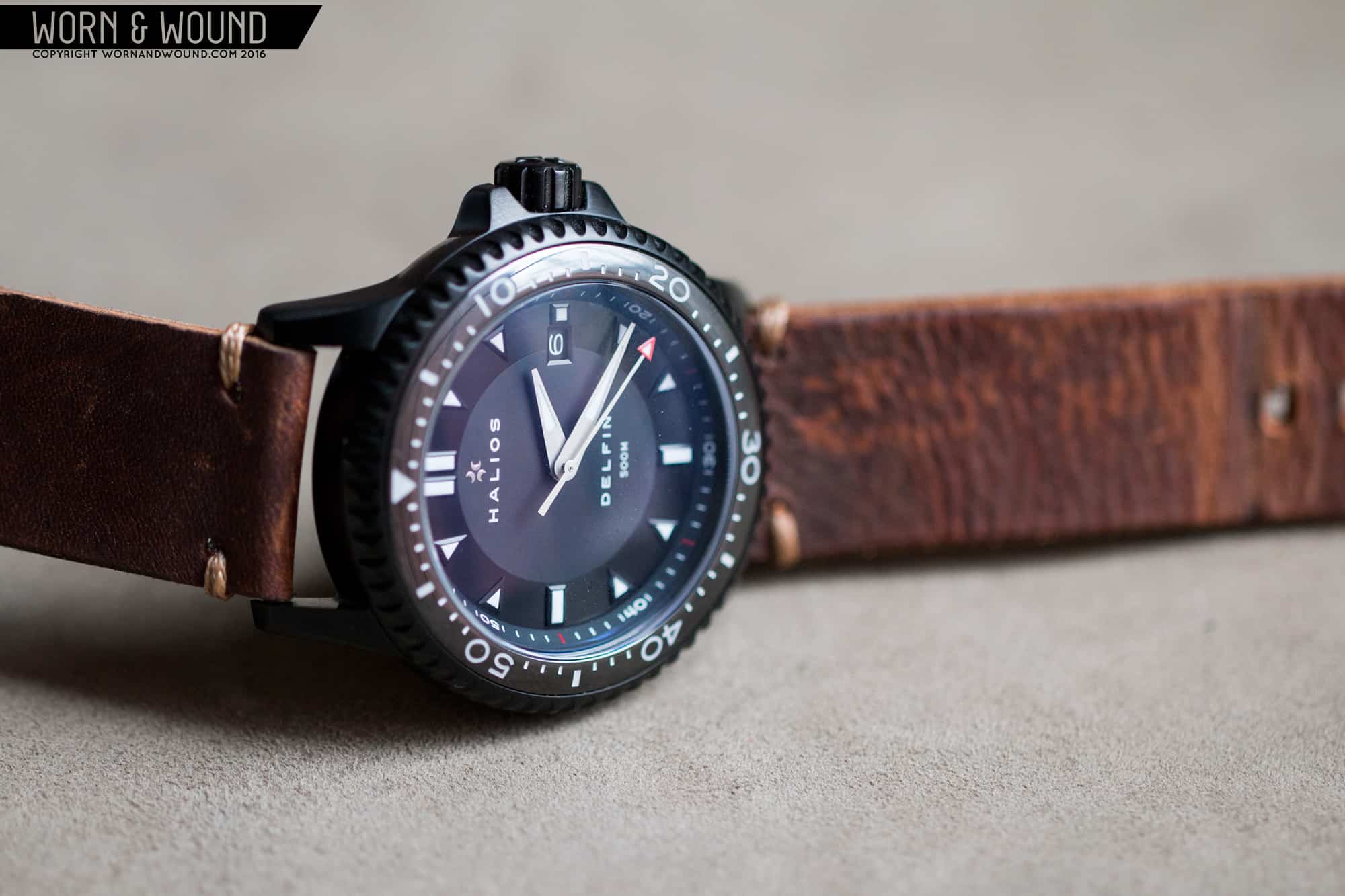

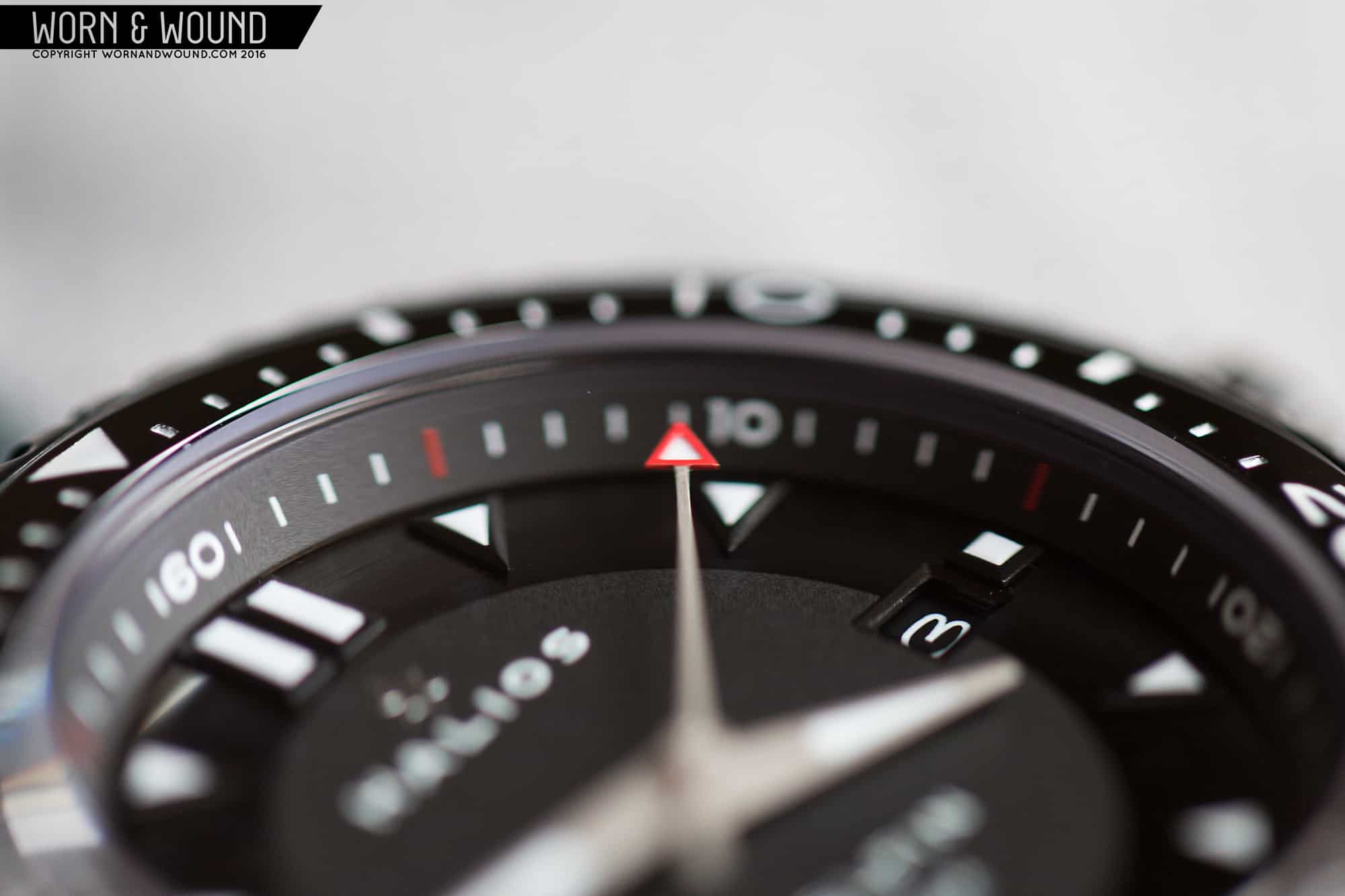



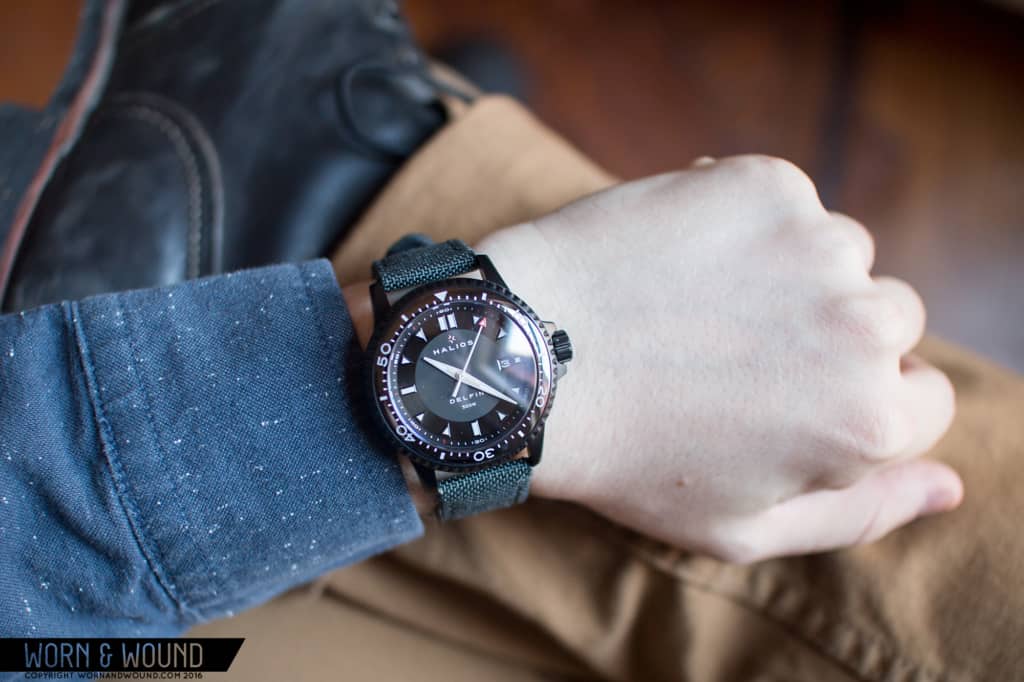


I’ve never bought a sports car without a high performance engine, and I’d never buy a sports watch without a high performance movement. It’s time for Halios to move up a level and offer their otherwise quite terrific watches with a movement beyond the Kickstarter watch level. Imagine this watch with a Soprod A10-2 or even a Top grade Sellita or (unlikely due to supplies) a Top grade ETA. They’ve been recognized for their design and appeal on sites from A Blog to Watch to worn&wound in reviews. Now they need to complete the package and break away from fashion watch territory.
But this immediately puts them into more competitive category. While they can stand out with a $700-800 price tag, can they stand out with a $1500-2000 price tag? For that kind of money it’s not that obvious anymore.
Where do you get those prices from? That doesn’t reflect the difference in the price of movements! It wouldn’t have to break the $1000 barrier. Look at what Steinhart does between their standard and premium models. A couple hundred added to the cost of the watch.
A Miyota 9015 movement at a supplier like https://www.cousinsuk.com/ costs
£69.95 a unit for Miyota or about $100 US.
Looking around for the Soprod A10, it’s at about $260 US to $300 US.
£305.00 for an ETA 2893 or $435 US.
So a premium version of this Halios Delfin might jump from $715 shipped to $875 or at most $975 shipped. And you’d have a far more desirable watch in my opinion.
If I recall correctly the Miyota 9015 and Soprod A10 are the same diameter and similar in thickness. A local watchmaker could probably swap the movements for you. Actually, have you asked Halios if they could swap movements for you?
That is an interesting idea. This Delfin in steel with a Soprod A10 in it would be a pretty terrific watch. I don’t know if they’d be interested in doing something like that, and I’m not sure if this is the watch for me at this moment — but that is something to think about.
The thing is, to use your sports car analogy, the miyota has the same horsepower. There is really nothing on the outside to differentiate the movement other than accuracy so unless its a cosc movement the point it moot. Just my opinion of course.
Maybe you can expand on what aspects of performance you find the miyota lacking.
I’ll leave it to you to look up the specs, technical points, and accuracy differences between the Soprod and the Miyota for yourself. They are SUBSTANTIAL. Well worth an added $200 to a watch. Probably worth a $1000 in value, but there isn’t that much difference in cost between the two movements.
Seems like it would be way easier for you to find the specs and post them since you already know them to be “SUBSTANTIAL”. Plus it would be a benefit to the community.
I own several watches with the Miyota 9015. Please, enlighten me as to what I’m missing and why it behooves me to spend an extra 200 bucks. I’m not picking an argument, I just want to know.
Jason and many other boutique brands have to use movements like miyota 9015 to
stay competitive. Maybe you can add the new STI movement one day, but
really what are you talking about? You have to know your customer
base and like the review mentioned, you’re getting great design/value for the
price with a reliable movement. Ferrari, Porsche, Lamborghini are all
owned by larger parent companies why? because the wouldn’t be profitable
without them. Koenigsegg and Pagani? Priced wayyy out of most, just to turn a profit.
Just keep it under $1000 and put together the great styling and seemingly quality build with a premium movement and they’ll stand head and shoulders above their competition. As it is now you have buyers like me — and I am in the market right now, and looked carefully at Halios (I also live in Vancouver, in fact) — and I’ll never buy a watch with a bargain basement movement in it again. I was going to buy the new re-release of Steinhart’s Ocean 2 Premium with the Soprod A10 which was supposed to come out this month but just the other day they suddenly delayed it until July, so now I’m ticked off after months of waiting and started shopping around. That watch, before it sold out was, by the way, less than this watch with its crappy Miyota. http://www.steinhartwatches.de/en/OCEAN-Two-black-PREMIUM,846.html
It seems to me, steinharts price advantage has to do with their seemingly catalog case and parts. I think borealis had a watch with an identical case. Still, one has to wonder how they have such easy access to eta’s.
Probably, but the switch to a better movement costs 160 euros in the case of the Ocean One. It has nothing to do with catalogue parts advantage.
I drive an old 911, from back when Porsche was independent. I’ve owned a couple over the years. You have no idea of what you’re talking about. They were independent and made a profit for over four decades. The only reason they are not independent now is because of a real jerk idiot named Wendelin Wiedeking who was the CEO when they were really raking in the billions as the most profitable per car company in the world — and this idiot tried to do a hostile takeover of VW and it backfired and the reverse happened when the Great Recession hit. And now VW owns them.
Way to hijack the comments section with a topic that has been beaten to death and resolved many times over.
If it were “resolved” I would not have had any responses to my initial post and seven people with opinions on it — including you. When things are “resolved” that doesn’t happen. I could care less what a bunch of peanut brains “resolved” amongst themselves in the past on a topic which is very much subjective.
An A10 would be nice, but Halios production is spotty as is. I’d like to see a bracelet option. I think he had issues with the supplier so there aren’t any available currently. I owned a Tropik SS with the bracelet and it was somewhat disappointing, which is too bad because the watch itself was great and the bracelet appearance was pleasing and somewhat unique. Halios design really stands alone IMO. I would pay a lot for a chrono with the Seiko auto NE88 movement and Halios design ethos.
“I would pay a lot for a chrono with the Seiko auto NE88 movement and Halios design ethos.”
That would be a great watch.
By ‘high performance’, you mean like a quartz movement?
I’m not sure what benefits a fancier movement would bring to a dive watch.
A better movement, not fancier. Rolex and Omega would disagree with you — they’ve seen lots of benefits and profits using the basic concept for a very, very long time.
You mean a benefit to their bottom line?
Personally, I don’t see an advantage to putting a fancy pants co-axial movement (as is the case with Omega this year) into a tool watch. The 9015 does it’s job admirably, and keeps costs down. In my opinion, assuming the movement is of a good enough level, it is the least important consideration of a dive watch.
What a nice looking watch. Keep us updated on how the PVD holds up. I’ve never owned a PVD or DLC watch and have always been curious about long term wear.
Zach, bracelet aside, what’s the better quality watch, the Delfin PVD or Trident 600 PRO?
Hi Joseph,
Good question, but honestly without both in front of me I hate to compare as I can’t quite remember all the details. But for what matters to me with watch purchases, the Halios would win because of having a more original design.
-Zach
Hmmm, the hands don’t really work on this one do they?
I think the hands match.
Really love the hand design on this one and how it matches the numbers!
Another cool detail not mentioned in the review is the blue metallic finish on top of the chapter ring. That thin ring of blue adds another cool detail on top of all the other cool details on this watch. Really liking Jason’s design.
I’ve almost missed that blue finish till read your comment.